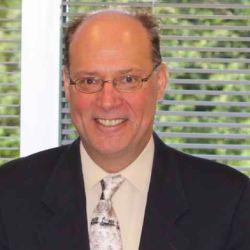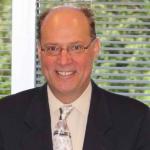
This article has been written in collaboration with Jacob Traverse [1]
Time has proven that there is good and bad science - often called junk science. Junk science began to rise in the 1960s and 1970s, promoted mainly by organizations and individuals looking to profit from the public’s fears. Bad science does not seek the truth; it seeks fame and fortune.
Written law did not appear until between 2100-2050 BC; the Code of Ur-Nammu was created in Ur, a city in Mesopotamia. For the most part, these laws and the subsequent and more humane Code of Hammurabi were administered by kings and their appointees, the ancient “State.” The scales of justice represent truth and fairness in today’s legal systems. The law searches for the truth by weighing evidence, balancing one party's evidence in relation to another without any other intervening forces. The party with the more complete and convincing evidence will have more “weight” on justice’s scale.
There have been good and bad laws. Sometimes bad laws are enactments - The Jim Crow Laws of the South and the redlining in the North both come to mind. Sometimes it is terrible court decisions - Buck v. Bell, where the SCOTUS ruled that the State may sterilize an individual merely because they have “intellectual disabilities,” which parenthetically is a decision still not overturned. Bad law, again, doesn’t seek the truth; it seeks to oppress and profit.
But science and law share a commonality in searching for truth. Science searches for the truth in our physical world. Law searches for truth in our social world.
“We follow the science.”
- Fictional Dr. Gil Grissom of CSI: Crime Scene Investigations
Science has played an ever-increasing and evolving role in criminal law for nearly a century and a half. Leaving behind phrenology, we have developed fingerprinting and now DNA matching, all made possible by science. Science has helped the legal system find the truth; for prosecutors to convict wrongdoers, and for defense attorneys to exonerate those who are innocent. Sometimes they are at odds, but following the Daubert trilogy of cases* as codified in Federal Rule of Evidence 702, all as to which Atlantic Legal Foundation has been instrumental, it is becoming rare for junk science and scaremongering to make their way into court proceedings.
Science has played an increasing role in civil litigation as well. With billions of dollars at stake in large class action suits, the science of risk and safety has become increasingly contentious.
Science was used by the plaintiffs in a class action suit against the makers of asbestos, showing exposure leads to an increased risk of developing mesothelioma.
“The importance of scientific accuracy in the decision of such cases reaches well beyond the case itself. ... we must search for law that reflects an understanding of the relevant underlying science, not for law that frees companies to cause serious harm or forces them unnecessarily to abandon the thousands of artificial substances on which modern life depends.”
- Associate Supreme Court Justice Stephen Breyer
And for more than a century, science has played a critical role in the creation of laws. Science is routinely used to design regulations meant to further the Clean Air Act. Under this act, the EPA began limiting exceedingly small air particles, PM2.5. Over the last 20 years, these regulations have reduced PM2.5in the US by 37 percent. Satellite images show America has the cleanest air outside of Siberia and Antarctica. Sound science produces beneficial law.
Some scientists and regulators think the EPA needs to make the PM2.5 levels even lower. A very costly undertaking. Why make this demand if PM2.5 levels are continuing to drop, even below the EPA’s current standard the EPA set? The reason given by these advocates is data showing PM2.5- related ailments have risen over the past 22 years.
“Cigarette smoking is a health hazard of sufficient importance in the United States to warrant appropriate remedial action.”
- The American Cancer Society Cancer Prevention Study I
This was the significant data underlying the Smoking and Health: Report of the Advisory Committee to the Surgeon General in 1964. It was another 26 years before the incidence of lung cancer peaked in the US. Biological impacts often lag months and, in this case, years behind exposure. In the face of declining levels of PM2.5, but rising incidents of PM2.5-associated disease, ignoring lag intervals is just one way faulty, “bad” science can influence regulation.
The research the EPA is using to validate its stricter PM2.5 policy is not open for the public to examine the underlying methodology, data, or the results leading to their conclusion. The scientific “method” recognizes that you can never prove something true, only that something is false. So, a form of skepticism is built into science. The opacity of the underlying science runs counter to the scientific method, and it is here where regulatory science goes from bad to worse. Public health, the EPA’s focus, requires evidence-based science. But that requires that we know the evidence. The scientific method is based on the understanding that evidence is what we know now and what we can change as we learn more. So, perhaps we should call it evidence-informed science. A lack of transparency in regulatory science brings the words of President Dwight Eisenhower into a new perspective:
“The prospect of domination of the nation’s scholars by Federal employment, project allocations, and the power of money is ever present and is gravely to be regarded .... Yet, in holding scientific research and discovery in respect, as we should, we must also be alert to the equal and opposite danger that public policy could itself become the captive of a scientific technological elite. ... lt is the task of statesmanship to mold, to balance, and to integrate these and other forces, new and old, within the principles of our democratic system-ever aiming toward the supreme goals of our free society.”
Thus, within the courtroom walls and legislative halls, science and law come together to shape our world. The judicial professionals and experts who oversee our courts and legal system increasingly serve as gatekeepers who determine what science and, specifically, what evidence can be used to determine the truth in cases where harm is alleged. The Atlantic Legal Foundation has worked for many years to ensure that evidence and expert witness testimonies are based on sound science and pushed back on the use of junk science and the toxic tort industry.
Recently, there have been examples of judges and jurists taking this role seriously and pushing back against financially incentivized lawsuits based on flawed or intentionally biased scientific evidence. In the case of the popular antacid medicine Zantac falling under scrutiny in 2019 for potential harm caused by the presence of a known carcinogen, US District Court Judge Robin Rosenberg issued a 341-page “smackdown” of faulty science and contrived evidence put forth by the plaintiffs and their expert witnesses. Judge Rosenberg thoroughly debunked the scientific claims by providing a detailed assessment of how the plaintiffs created or manipulated the methods and evidence to fit their claims and did not indicate causation. This resulted in the dismissal of the multidistrict litigation based on the US Supreme Court’s standard for experts set in its 1993 decision, now reflected by the Daubert [2] trilogy and Federal Rule of Evidence 702, in which the Court recognized the Atlantic Legal Foundation for its helpful amicus brief on behalf of the Court and ALF’s amici included Nobel laureates and other renowned scientists.
“Here, there is no scientist outside this litigation who concluded [Zantac] causes cancer, and the plaintiffs’ scientists within this litigation systemically utilized unreliable methodologies with a lack of documentation on how experiments were conducted, a lack of substantiation for analytical leaps, a lack of statistically significant data, and a lack of internally consistent, objective, science-based standards for the evenhanded evaluation of data,”
- US District Court Judge Robin Rosenberg
So, science and law have much in common. Science, as we know it, is merely natural laws. And the law, as we know it from law-making bodies, the criminal and civil trial and appellate courts, often have deep roots or jurisprudence in science.
[1] Mr. Traverse is President and CEO of the Center for Truth in Science and an Advisory Council Member of the Atlantic Legal Foundation
[2] Daubert v. Merrell Dow Pharmaceuticals, Inc., 509 US 579 (1993); General Electric Co. v. Joiner, 522 US 136 (1997); and Kumho Tire Co. v. Carmichael, 536 US 137 (1999)



